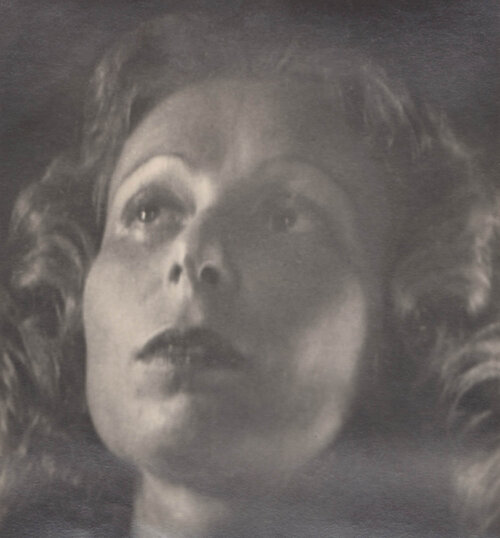
Laelia Goehr
10.9.2021 by John March
The startling story of Gerty Simon’s lost and found work featured in the current exhibition, serves as a reminder of the photographic talent forced from Germany and Austria during the 1930s. Until recently the work and lives of many refugee women photographers who settled in Great Britain have been hidden from view.
A recent London exhibition revived biographical exile narratives and showed photographic work anew, uncovering personal and professional histories, not only celebrating the work of the better- known photographers but also those, like Gerty Simon, who had all but vanished from public sight.
The stories of the twenty women photographers who grew up in the German-speaking realm and later settled in England (mainly London), trace a complex web of forced migration in diverse circumstances, disrupted family and professional lives, and the process of starting again in a new land. For some of the better-known women photographers, like Edith Tudor-Hart, Gerti Deutsch, and Lucia Moholy, their early engagement with photography was continued in a new setting. Portraitists, like Gerty Simon, with public reputations in Berlin and Vienna – here we can think of Lotte Jacobi and Lotte Meitner-Graf – re-established their careers in New York and London respectively. For others, photography was a second-choice occupation, having had their prime careers ended by Nazi discrimination. Some young women refugees in Britain began highly successful careers in photography after having been exiled.
Taken together, the work of these photographers provides a unique insight into the ways in which Continental advances in the theory and practice of photography was then integrated into a more conservative British visual culture. The variety of genres in which they worked – portraiture, social documentary and many commercial applications – also generated images that were so resonant of both Weimar-era Germany (and Austria) and wartime and post-war Britain.
One little-known photographic and cultural figure, who embodied the spirit of both Weimar Berlin and post-war Britain, is Laelia Goehr. Originally from Kiev, she came to Berlin with her family as a schoolgirl, to escape the chaos and dangers of the Russian revolution, in 1919. Building on her classical training as a pianist she enrolled in the Hochschule fűr Musik, finally graduating in 1929. In parallel with her classical musical education, she embarked on a successful career in cabaret in a double act with Rosa Goldstein, another talented young musician. Touring as ‘Lil and Peggy Stone’ or ‘The Stone Sisters’, playing and singing American popular songs, ragtime and dance music, they enjoyed a blossoming career that brought regular work in the many cabaret spots in Berlin and other major cities of Europe.
In 1930 Laelia met and married Walter Goehr, an established Berlin musical figure with prominent roles of composer, conductor, and arranger in classical as well as popular genres. His work at Radio Berlin and employment as composer and conductor at Erwin Piscator’s theatre company where Laelia also played, together with his Jewish heritage, conspired to make him a marked man when the Nazi takeover of power materialised. Effectively unemployable he took up an offer of work in London, and with her husband Laelia’s second exile experience began.
With a long-standing interest in photography Laelia began to apply herself to the medium, first taking wartime portraits of servicemen and through mentorship from Bill Brandt developed a successful career. Her work spanned different genres including portraiture, photographing animals and plants, and a speciality of photographing musicians at work. Her images were published in the mass circulation illustrated magazines of the day, she collaborated with eminent writers on books about animals, and at the end of her working life published books of her photographs of musicians. In 1965 Laelia photographed the composer Igor Stravinsky during rehearsals at the Royal Festival Hall, London on his last visit to the UK. Her photographs were later exhibited in a number of cities including Los Angeles in an exhibition to celebrate the centenary of Stravinsky’s birth (1968), and at the Victoria and Albert Museum, London, (1982) where the accompanying catalogue was published as Stravinsky Rehearses Stravinsky. Her book, Musicians in Camera (1987), with a foreword by Sir Yehudi Menuhin, featured seventy-seven photographs of leading world figures of twentieth century classical music.
This brief pen portrait records a life and career that was all but forgotten, but for the memorialising efforts of her grand-daughter, realised in a recently completed website which bears her grandmother’s name. The biographical narrative and accompanying images point to a life of creative fluidity and enterprise – classical and popular music, shifting focus from making music to photography and then producing images for popular consumption and books of specialist interest – in the wholly diverse settings of Kiev, Berlin and London.
Laelia Goehr’s career was not exceptional, in the sense of her being counted as one of the great women photographers of the period, of which there are many. However, she is one of many exceptional women, like Gerty Simon, who, in the face of persecution and the dislocation of exile, managed to pursue a sparkling creative life that for a time included photography.